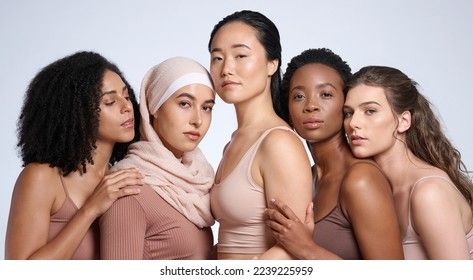The beauty industry is known for its constantly evolving trends and products, but in recent years, there has been a growing focus on diversity and inclusion. This shift is not only driven by consumer demand for more representation in beauty campaigns, but also by the need for brands to reflect the diverse world we live in. In this article, we will explore the progress that has been made in promoting diversity and inclusion in the beauty industry, as well as the challenges that still lie ahead.
Progress in Diversity and Inclusion
Over the past few years, there have been significant strides in promoting diversity and inclusion in the beauty industry. Many brands have started to expand their shade ranges to cater to a wider range of skin tones, and have launched campaigns featuring models of different races, sizes, and ages. This increased representation has been well received by consumers who are seeking to see themselves reflected in beauty advertisements. In addition to diversity in advertising, there has also been a push for more inclusivity behind the scenes, with brands hiring diverse teams and collaborating with influencers from underrepresented backgrounds.
Challenges in Achieving Diversity and Inclusion
While progress has been made, there are still challenges that the beauty industry faces in achieving true diversity and inclusion. One of the biggest challenges is the lack of representation of certain groups, such as people with disabilities or non-binary individuals. There is also a need for more transparency in terms of diversity initiatives, as some brands have been criticized for tokenism or making superficial efforts to appear inclusive. In addition, there is a need for more education and awareness about diversity and inclusion within the industry, as well as a commitment to making long-term changes rather than just following trends.
The Future of Diversity and Inclusion in Beauty
Despite the challenges, there is reason to be hopeful about the future of diversity and inclusion in the beauty industry. More and more consumers are demanding diversity and representation in the products and campaigns they support, which is putting pressure on brands to be more inclusive. In response, many brands are starting to prioritize diversity and inclusion in their hiring practices, product development, and marketing strategies. By continuing to push for change and hold brands accountable, we can ensure that the beauty industry becomes more reflective of the diverse world we live in.
Conclusion
In conclusion, diversity and inclusion in the beauty industry have come a long way, but there is still work to be done. By celebrating progress, acknowledging challenges, and advocating for change, we can help create a more inclusive and representative beauty industry for all. It is up to brands, consumers, and industry leaders to prioritize diversity and inclusion in order to truly reflect the beauty of diversity in all its forms.

